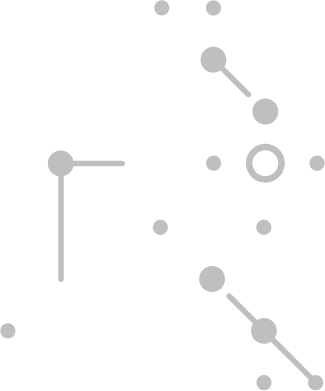



Cloud Monitoring: Benefits, Challenges, And Best Practices for Your Infrastructure
2024-03-14 10:18:32As more and more companies are exploring multi-cloud or hybrid cloud approaches, monitoring becomes increasingly challenging. According to research, 80% of organisations suffer from widening visibility gaps across their cloud infrastructure, which impairs their ability to track workload performance, security threats, and cloud costs. Almost all respondents (99%) indicate direct business value from comprehensive visibility.
Growing IT complexity calls for more customised monitoring approaches matching your cloud infrastructure’s specific features and needs. Unfortunately, the overcrowded segment of cloud tracking solutions doesn’t make this task particularly easy.
In this blog post, I’ll explore critical aspects of cloud monitoring, including its benefits and implementation challenges, and share the industry’s best practices. Stick around!
What is cloud monitoring?
Cloud monitoring refers to tooling and practices for gathering, analysing, and observing the performance of cloud service apps and resources.
All cloud service providers offer built-in mechanisms for collecting and visualising logs and metrics. Moreover, there are numerous open-source tools and third-party services, most of which you can easily integrate with your cloud services.
This step allows you to avoid so-called ‘silent failures’, situations when your system comes to a grinding halt without giving you previous cues that something was wrong. With cloud monitoring, you can detect anomalies and react quickly to avoid downtime.
Moreover, a robust monitoring system lets you better adjust your infrastructure parameters to avoid potential bottlenecks, optimise resource usage, and improve capacity planning.
Four more reasons to invest in cloud monitoring
Real-time monitoring of the performance of your apps and services is an important benefit of modern cloud monitoring solutions.
However, there are a few more areas where such tools bring tangible benefits:
Availability and reliability – with tracking and alerts, your team is first to know in case of any service disruptions or downtime. As a result, you can react faster to minimise the negative impact of system malfunctions and enhance your business continuity.
Scalability – by monitoring your apps and infrastructure, you can better track your resource usage and dynamically adjust it to your changing demands.
Cloud cost optimisation – companies actively track and optimise their cloud spend. Cloud cost monitoring solutions make it easier to identify underutilised resources and analyse cost trends to drive your expenses down effectively.
Security and compliance is another area where cloud monitoring is advantageous. By tracking access logs, detecting unusual activity, and implementing best practices, you can enhance your cloud infrastructure’s security and better protect sensitive data.
This benefit is particularly important in industries with strict regulatory requirements. Cloud monitoring helps teams to ensure compliance by providing visibility into security controls, access logs, and related practices.
Frequent challenges in the implementation of cloud monitoring
Cloud monitoring is undoubtedly a game worth the candle, but its implementation and configuration aren’t always a piece of cake.
Having supported clients in this process, we observed a few issues that can get in the way:
1. The scalability of cloud monitoring systems can be a bottleneck.
Hundreds of cloud components running simultaneously can cause additional problems when monitoring their systems. Collecting data from multiple moving elements can be time-consuming and quickly take up large amounts of memory.
2. No adherence to standards when configuring systems and monitoring.
Deploying apps to microservices and containers without properly configured system log forwarding can significantly increase the time needed to resolve any issue.
3. Dynamic environments might leave some components unmonitored.
No automation of an app or system monitoring in new deployments or when introducing new services or updates can lead to leaving specific system components without monitoring.
4. Too many cost-monitoring tools can be a headache.
Fierce competition in the cloud monitoring software market is both a blessing and curse. With so many great options, choosing the best solution for your needs can be a tall order.
In the process, you need to account for factors like cost, features, the level of knowledge required to use the solution efficiently, and forms of support.
5. Selecting the right metrics for all services can be challenging.
Each cloud monitoring tool provides numerous metrics, which can prove challenging to analyse and understand on a broader scale and with more tracked services.
That’s why it’s essential to carefully select the metrics you wish to track across the infrastructure and unify them in one dashboard, for example, in Grafana.
Best practices for configuring cloud monitoring for your infrastructure
How can you then ensure that your cloud infrastructure is properly monitored and that no critical system change goes under your radar? Here are some proven tips:
1. Start with implementing your CSP’s built-in cloud monitoring.
While your cloud service provider’s native monitoring solution may not fully respond to all your needs in the long term, it’s always a great starting point. AWS CloudWatch, Google Cloud Monitoring and Cloud Logging, or Azure Monitor can give you critical insights while laying the groundwork for more targeted tracking solutions.
2. Define your key goals and metrics.
Analyse your needs and focus on selecting critical metrics for each component you wish to monitor:
In databases, this information should include the number of executed queries, lock statuses, indexing, or the number of available resources.
In Virtual Machines and containers, metrics need to shed light on the consumption of resources such as CPU, RAM or hard drive occupancy.
In applications and servers, metrics must include: latency, the time it takes for the server to handle a request; traffic, the number of requests the server can handle; errors, the number of failed requests; and server load, so how many resources it uses.
Using cloud monitoring data lets you determine if your system functions well and provides a satisfying response time for the customer. Moreover, these metrics also help to predict how an application or server may behave in heavy traffic or downtime and manage resources more efficiently.
While services that aren’t critical to your system’s operation can collect only basic metrics, gathering the full spectrum of data for the most important components is essential.
3. Analyse available cloud monitoring solutions.
Once you identify your needs, it’s time to analyse the available monitoring solutions on the market and pick the right tools for your objectives and metrics. Popular choices include Prometheus, Datadog, Splunk, PagerDuty, AppDynamics, and many more.
4. Collect and store logs.
Identifying the location of a problem with log analysis can significantly speed up the troubleshooting process. That’s why it’s essential to collect logs from key services and systems and avoid storing them in the same place that may fail, like databases or a K8s cluster.
5. Set alerts and notifications.
Metrics and logs alone aren’t enough to build adequate response and protection mechanisms. By setting alerts, you can get a timely notification when your system runs into the risk of prolonged downtime or experiences any other alarming issues. Configuring the alerts and defining each application’s limits will allow you to react quickly enough in an emergency.
6. Beware of the cost of cloud monitoring.
Prolonged metrics and logs collection, especially from multiple services and sites, can result in high data storage costs. Such expenses may exceed your app downtime’s potential cost, depending on the monitoring service fee and where you store its data.
It’s, therefore, essential to account for the location, as some cloud regions may incur extra transfer fees if the monitoring tool becomes part of your infrastructure.
7. Easy access and data storage.
Where you send data like logs or metrics should be separate from your other systems that may be prone to downtime or lack of response.
You can minimise the risk of losing issue information by sending logs from an instance to a remote location via Syslog, metrics to a Grafana Mimir database, or data in object storage services like AWS S3, Google Cloud Storage or Azure Storage.
Over to you
Cloud monitoring is a crucial weapon for teams navigating increasingly complex cloud infrastructures.
With visibility gaps affecting most organisations, carefully designed and configured cloud monitoring solutions are indispensable for tracking performance, security, and costs.
However, when building their cloud monitoring solutions, teams often need help with scalability, adherence to standards, and too many tools to choose from.
That’s why it’s essential to follow the industry’s best practices and start using your vendor’s cloud monitoring before investing in more advanced solutions.
Defining key metrics and browsing the market for the right tool for your requirements may take a while, especially as you must carefully consider your costs and storage options.
Get a professional cost monitoring consultation and create a new tracking solution for optimal performance, reliability, security, and cost efficiency. Drop us a line today.
About the author:
Jędrzej Borowczak is a DevOps Engineer at Tenesys, renowned for his precision and meticulous attention to every aspect of IT infrastructures. His passion for technology began at a young age, which quickly evolved into a professional career focused on developing and maintaining complex cloud systems. Jędrzej possesses unique skills in automation, container orchestration, and configuration management, enabling him to effectively manage large-scale infrastructures.

